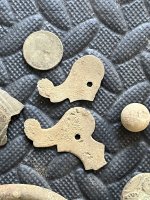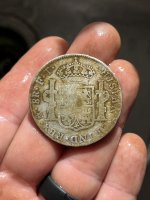TerraGazer
Greenie
- Jul 21, 2014
- 10
- 1
I need help please. I initially posted this under techniques and got no reply and hope I am okay to post this here.. This is my 1st attempt to polish rocks. I am using a harbor freight vibratory tumbler, as I wanted to keep the organic shapes of my stones. Vibrating mostly very smooth banded hard (7) wonder stones that I had found in dry river wash along with a larger angular agate and a purple quartz stone. I am using resin filler (the little pyramid shapes) and the required moisture for a "slurry". So, prior to 1st grit, all the banded hard wonder stones were very smooth, already as they were river washed. I ran the first grit for about 9 hours. . And was extremely pleased with end of 1st grit outcome... I then pretty carefully cleaned the bowl of sludge and grit. I then 'thought' I had cleaned rocks pretty good too. Again, I was pretty happy at his point as I was seeing nice colors come through etc. But! After about 8 hours of 2nd grit I pulled some random stones and rinsed them, only to find some of my initially smooth stones now have tiny pock marks. Others are still very smooth and pretty much exactly where I would want them to be at prior to pre-polish.
So can someone explain what happened: Did some of the larger more angular rocks pinhole pock the small, those softer-ish ones?
Or
Did I miss cleaning out all the 1st grit ?
Or
Have I been way too impatient and let the 2nd grit do the rest of its job before getting anxious about the pinholes?
Any and all help, pointers, criticism and grumbling, etc. is welcomed and invited !
So can someone explain what happened: Did some of the larger more angular rocks pinhole pock the small, those softer-ish ones?
Or
Did I miss cleaning out all the 1st grit ?
Or
Have I been way too impatient and let the 2nd grit do the rest of its job before getting anxious about the pinholes?
Any and all help, pointers, criticism and grumbling, etc. is welcomed and invited !






